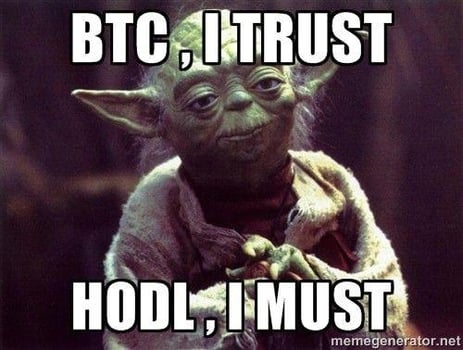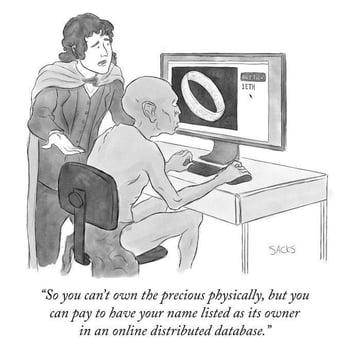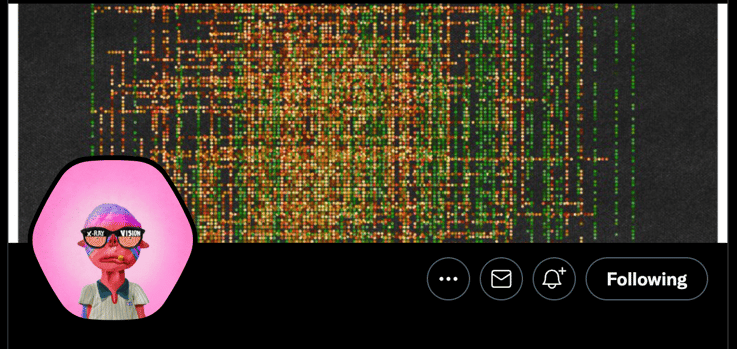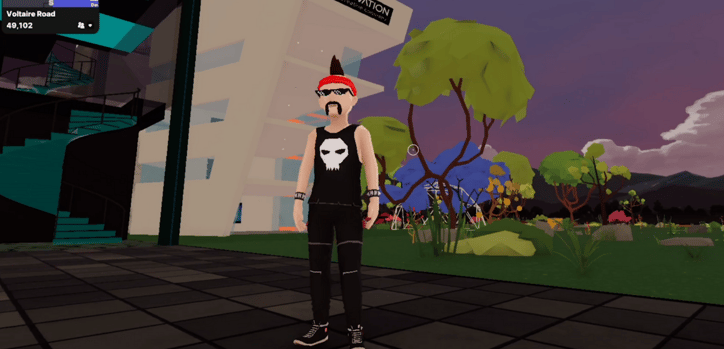
Glossary of Metaverse & Web3 Terms
Written by Elevation
AirDrop
An airdrop, in the cryptocurrency world, is a marketing tactic that involves distributing coins or tokens to promote and raise awareness for a new virtual currency. This is similar to a giveaway to keep players involved and engaged, and in return, the players are usually asked to promote their service via social media. Could this be … the new influencer marketing?
Augmented Reality
Augmented reality combines the real world with the virtual world. It allows for real-time interaction and precise 3D registration of virtual and real objects. In the crypto world, augmented reality has an important relationship with NFTs. AR NFTs incorporate AR components, such as being able to see digital items in your surroundings or on your face/body.
Avatar
![]()
An avatar is a digital representation of a user. The term PFP (or profile picture) can sometimes be used interchangeably when used in the context of a social media icon. In metaverse spaces, avatars can give a player or user a "body" in virtual worlds in order to interact with the virtual space around them
Blockchain
Blockchain is a type of immutable database that is shared among the nodes of a computer network. They are best known for the role that they play in cryptocurrency, as they maintain a secure and decentralized record of transactions. Blockchains guarantee security of data, generating trust without the need for a third party.
Cryptocurrency
Cryptocurrency, often called crypto, is an exchange medium that is digital, encrypted, and often decentralized. In comparison to the US dollar, no central authority is maintaining the value of a cryptocurrency. Crypto can be used to buy regular goods and services, but most people invest in crypto like they would in stocks.
Cryptography
Cryptography means “secret writing,” or the ability to exchange messages that can only be read by the intended recipient. This guarantees security for transactions and for the participants. It is used for many purposes including securing transactions on the network, controlling the generation of new currencies, and for verification of the transfer of digital assets and tokens.
Decentralization
Decentralization is the transfer of supervision and decision-making from a central authority or location, such as an individual, a corporation, or a group of people, to a dispersed network. The World Wide Web was originally created as a decentralized platform.
Decentralized applications (Dapps)
Decentralized applications are applications that run on a blockchain network of computers instead of relying on one singular computer or centralized servers. They are free from the control of a single authority, giving them some advantages such as the safeguarding of user privacy, a lack of censorship, and the flexibility of development.
Decentralized autonomous organizations (DAOs)
A DAO is an organization represented by rules encoded as a computer program that is transparent, controlled by the organization members and not influenced by a central governing body. Decisions made by DAO’s are often made via a digital voting system.
Discord
Discord, a chat and voice app that was originally created for gamers and developers, is now becoming the top platform where blockchain and crypto communities are hosted.
ENS Domain
ENS, otherwise known as Ethereum Name Service, is a service that allows users to turn long data strings into easily readable addresses. This platform allows anyone to purchase simple addresses, similar to website URLs, that are easy to use and remember.
Exchange
An exchange is a type of platform that is set up for the buying and selling of cryptocurrency. You can use an exchange to trade crypto tokens or to buy crypto using FIAT currency, such as the US dollar or the Euro.
Floor
Within an NFT collection, floor price is defined as the cheapest purchasable NFT in that series. Floor price is also known as entry price.
FOMO
FOMO is short for “fear of missing out.” Crypto trading is often driven by emotions versus valuation, so this might allude to the feeling when you see a big green percentage growth on a chart and you don’t own that coin. FOMO is the feeling of fear or anxiety that you might be missing out on a trading opportunity.
Gas
Gas is the fee or cost that is required to make a transaction or formulate a contract on a blockchain. The price of gas is calculated by supply and demand, similar to any other good or service, between the network’s miners. The rate of gas is determined by the computing speed of a blockchain and how many transactions per second it can handle. The term “gas war” is used when there is a blockchain usage spike (sometimes due to popular NFT drops occuring at a single time or simply from competing blockchain interactions), resulting in high gas prices. The best way to think about a “gas war” is to compare it to Uber’s “surge prices.” ETH is known for notoriously high gas prices as it has a limit of processing only 15 transactions per second, while the demand is far greater.
GM/GN
GM means “good morning,” and GN means “good night.” Usually the crypto Twitter community will begin their days with a GM tweet and end it with a GN tweet. Followers will usually greet back with a GM and GN. Using the term “GM” is a way of announcing yourself as a member of the NFT community and is also used to build a community online and show support for the NFT and web3 technology culture.
HODL

HODL is an acronym used in the cryptocurrency space that is short for "Hold On For Dear Life".
Layer 1
Layer 1 refers to the underlying main blockchain architecture that is the basis for security and consensus.
Layer 2
Blockchain scalability refers to a computer system’s ability to manage an increasing workload. If scaling is a success, blockchain networks will be able to compete with centralized networks by offering greater capabilities.In comparison to Layer 1, Layer 2 is an overlaying network that lies on top of the underlying blockchain to improve its scalability and efficiency. Layer 2 refers to solutions being proposed to the blockchain scalability issue.
Metaverse
The metaverse is a loose term used to define a digital future that combines persistent virtual worlds, AR and VR technologies, and ownership of digital goods that can be transported across platforms and applications.
Mining
A competitive process on proof-of-work blockchains like Bitcoin that rewards validators for solving complex cryptographic puzzles. This is how new coins are introduced into the economy for proof-of-work blockchains.
Minting
The process of creating a new NFT and validating it on a blockchain.
NFTs (non-fungible tokens)

Digital files that represent ownership or custody of a digital asset, like a piece of digital art, a ticket or pass, or anything else that is digital and can be tracked digitally.
PFP

PFP is short for “profile picture.” They are small pieces of artwork that might be seen as social media profile image, and this type of NFT has grown exponentially in popularity. PFPs in the crypto world allow owners to signal identity, membership in a group, or even wealth.
“Probably nothing”
Probably nothing is an ironic slang term often used to signify something that seems important, like a big announcement or surprisingly positive statistics.
Proof-of-stake
An alternative validation model for blockchains that doesn’t require the heavy power usage seen in the proof-of-work model. In proof-of-stake validators are approved based on staking a generally large amount of a given cryptocurrency within the ecosystem. This method makes it expensive to become a validator in order to combat bad actors who might want to compromise the system.
Proof-of-work
The original validation method created for the Bitcoin blockchain. Many other blockchains are moving away from this model or have created alternatives. The proof-of-work model makes validators to solve complex cryptographic puzzles that require many computers and processors that, in turn, require a huge amount of power to function. This model is what often gives cryptocurrency and NFTs a reputation as being bad for the environment.
Public key
Digital wallets are secured with cryptography. The public key is the public wallet address used for transactions. For example, if one user wants to send an NFT to another user, they will input the other user’s public key in the send field.
Private key
The private key is cryptographically generated for a digital wallet, and it serves as the master access point to the wallet. It can be thought of as a very secure password. In most cases the private key is shown as a series of 12 or 24 words, and without the private key, the digital wallet and its contents can not be accessed.
Shill
Shilling is defined as the excessive advertisement of a coin or token. Usually this is done in an attempt to reel in investors, which in turn, increases buying activity and raises the market price. Shilling is not a positive term and is similar to conning, in the sense that you are tricking people into thinking that a coin or token will be extremely valuable in the future.
Smart contract
A program that is designed to automatically run on a blockchain when a user interacts with it. Smart contracts are most often used for NFT purchases and transfers as well as for ‘on-chain’ governance within online organizations.
Token
The term used to describe any sort of digital asset that is trackable across a blockchain. Cryptocurrencies and NFTs are considered token types within the blockchain ecosystem.
Virtual land

Virtual land is a broad term used to describe any sort of representation of a physical place in the virtual world that a user can visit, or purchase. While virtual land platforms like ‘Second Life’ have been around for years, there is a renewed interest in virtual land platforms that are selling parcels on the blockchain and allowing buyers to build their own experiences and even monetize those experiences.
WAGMI
A slang term that stands for “We’re All Going To Make It”. This term is often used optimistically amongst people early to the crypto and blockchain space.
Wallet
Similar to an Apple wallet, or even a regular wallet, crypto wallets keep your private keys safe and accessible to only you. Private keys are passwords that are used to access your cryptocurrencies. Wallets come in many shapes and forms, such as hardware wallets that look like USB sticks to mobile apps. This makes crypto as easy as shopping online with a credit card.
Web3
An umbrella term used to cover a range of new internet technologies and platforms based around blockchains. Web3 concepts generally include ideals towards a more decentralized web that more closely resembles the first iteration of the web, before the rise of large tech giants and centralized platforms.Topics: future of creativity


